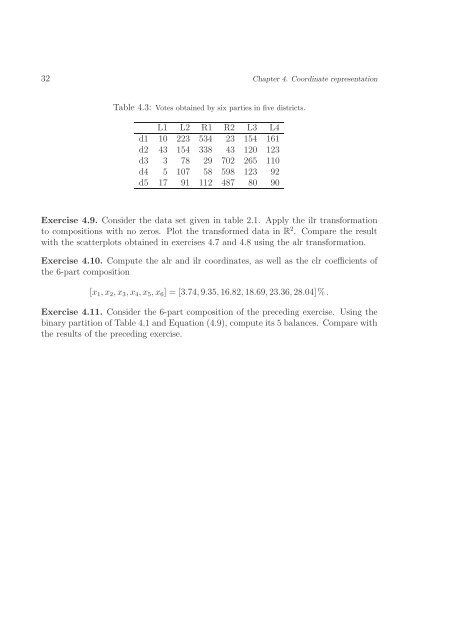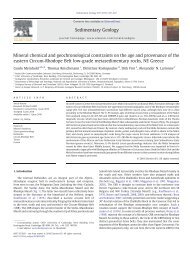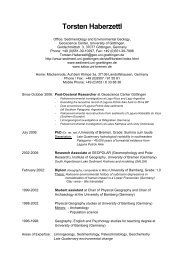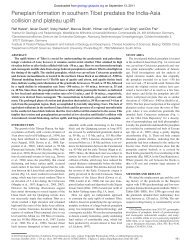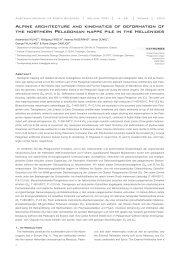Lecture Notes on Compositional Data Analysis - Sedimentology ...
Lecture Notes on Compositional Data Analysis - Sedimentology ...
Lecture Notes on Compositional Data Analysis - Sedimentology ...
Create successful ePaper yourself
Turn your PDF publications into a flip-book with our unique Google optimized e-Paper software.
32 Chapter 4. Coordinate representati<strong>on</strong><br />
Table 4.3: Votes obtained by six parties in five districts.<br />
L1 L2 R1 R2 L3 L4<br />
d1 10 223 534 23 154 161<br />
d2 43 154 338 43 120 123<br />
d3 3 78 29 702 265 110<br />
d4 5 107 58 598 123 92<br />
d5 17 91 112 487 80 90<br />
Exercise 4.9. C<strong>on</strong>sider the data set given in table 2.1. Apply the ilr transformati<strong>on</strong><br />
to compositi<strong>on</strong>s with no zeros. Plot the transformed data in R 2 . Compare the result<br />
with the scatterplots obtained in exercises 4.7 and 4.8 using the alr transformati<strong>on</strong>.<br />
Exercise 4.10. Compute the alr and ilr coordinates, as well as the clr coefficients of<br />
the 6-part compositi<strong>on</strong><br />
[x 1 , x 2 , x 3 , x 4 , x 5 , x 6 ] = [3.74, 9.35, 16.82, 18.69, 23.36, 28.04]% .<br />
Exercise 4.11. C<strong>on</strong>sider the 6-part compositi<strong>on</strong> of the preceding exercise. Using the<br />
binary partiti<strong>on</strong> of Table 4.1 and Equati<strong>on</strong> (4.9), compute its 5 balances. Compare with<br />
the results of the preceding exercise.


